How Silver Flooded the World
And how that Replaced Feudalism and the Church with Capitalism and Nation-States
In Internet Will Kill the Nation-State, we explored how communication technologies destroyed the feudal system and the Church, and created the nation-state. In Pax Mercatus, we saw how agricultural and transportation technologies also contributed. Finance had a major effect as well: We saw in How Silver Made Chinese Empires the ways in which silver made and unmade Chinese empires. In Europe, silver also triggered the discovery of America, a technological explosion, and a runaway chain of events that replaced feudalism with capitalism and nation-states. If you understand this, you’ll be able to understand why nation-states are threatened by cryptocurrencies today, and how their inevitable success will weaken nation-states. In this premium article, we’re going to explore how Europe starved for silver, and how the reaction to this flooded the world with silver. In the next article, we’re going to look at the consequences in the modern era, and the takeaways for today.
It’s 1460, and Europe is starving for money. Silver and gold are so scarce that their value is skyrocketing compared to other commodities, so their prices plummet. With deflation, everything will cost less tomorrow than today, so people hoard their precious metals. The more they do so, the less gold and silver are in circulation, the more their value climbs, the more prices drop, and the more the economy grinds to a halt: Without money, people must resort to barter, which slows down trade. Bankers stop lending because it’s unclear whether they’ll be paid back. Investment drops. The economy grinds to a halt.
How did we get here?
The Great Bullion Famine
A century earlier, around 1350, the Black Death spread across Europe, killing 25-50% of its population.
Men were dying, but coins were not.—David Herlihy
For a century, there was more coin than people, so they didn’t notice when silver and gold production slowed down. But it did; first, because of fewer miners.
Second, because mines ran out of gold and silver.
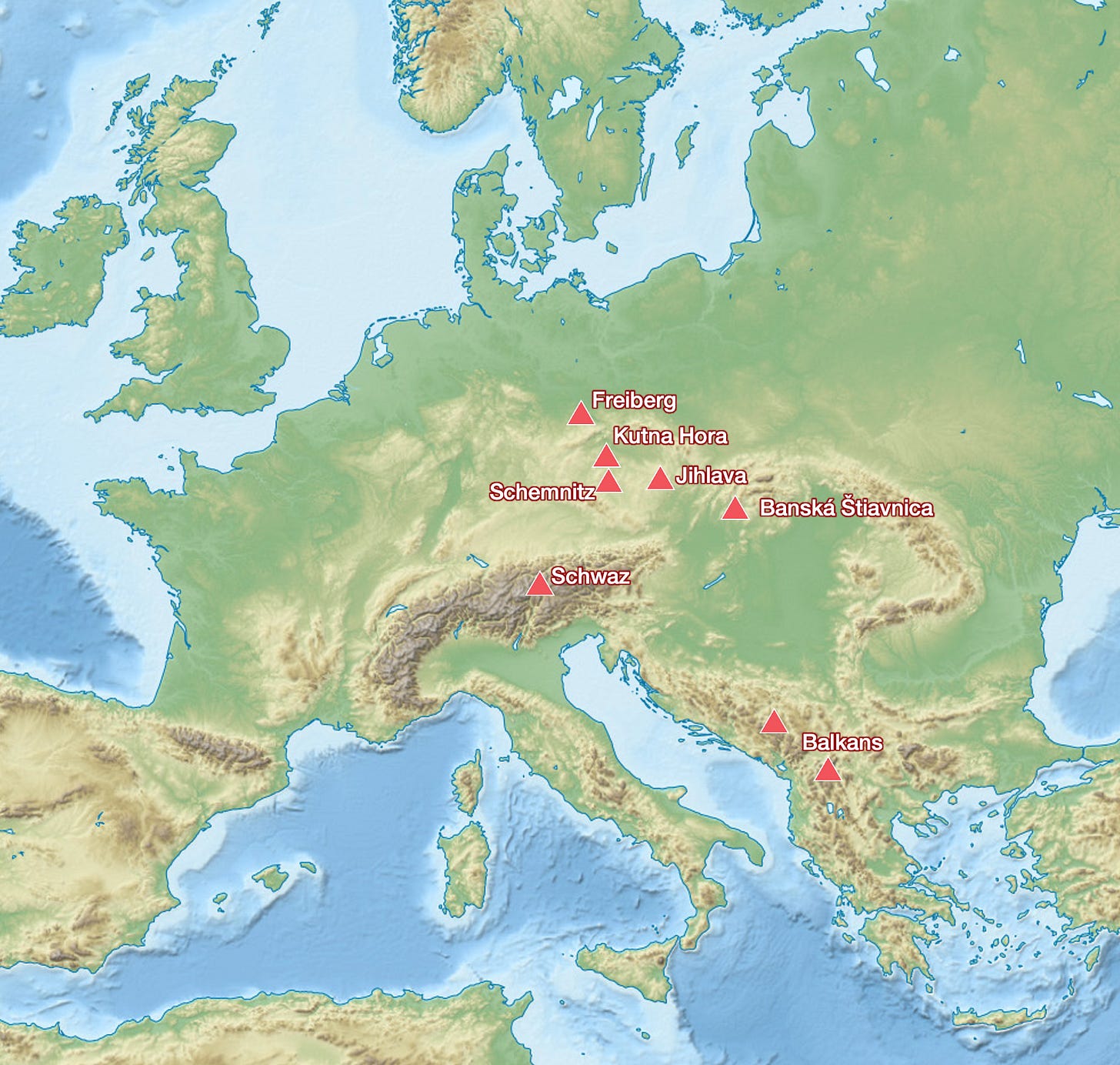
Third, the supply of gold from Africa collapsed after the Mali Empire civil war in the 1360s and the Songhai Empire instability.
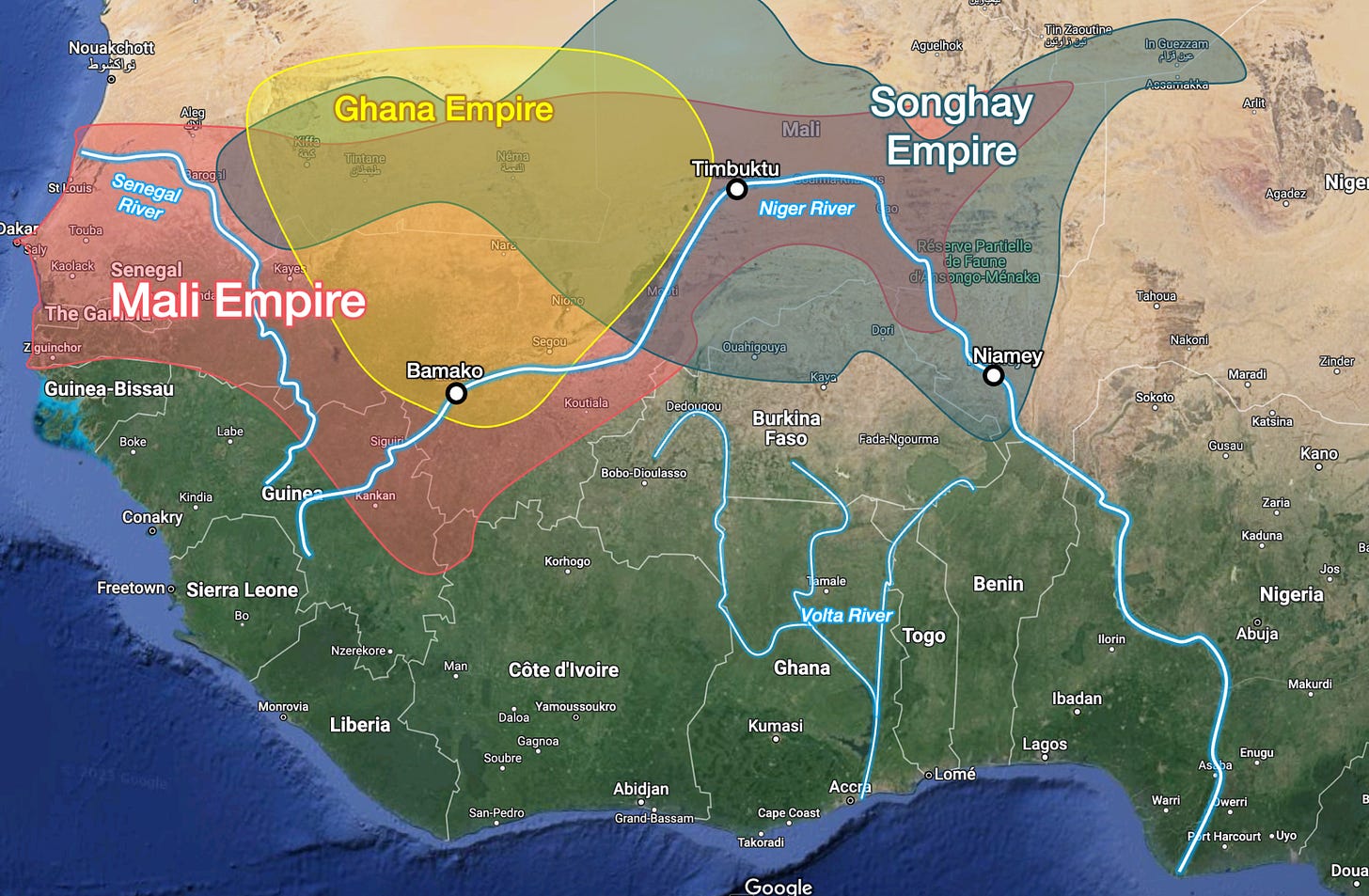
Fourth, mines in southeastern Europe, in Serbia and Bosnia, fell to the Ottoman Empire.
So new sources of silver and gold shrunk. Meanwhile, silver sinks continued. Europeans kept buying Chinese silks, Indian cotton cloth, dyes, and spices, Middle Eastern sugar and drugs… But Europeans had little to export: wine, slaves, wood, salt, and little more. Italian traders paid one third in merchandise and two thirds in precious metals.
As silver and gold became scarcer, people started debasing the currency: Diluting it with other metals, clipping its edges…
Between the Black Death, the scarcity of metals, the debasement of currency, the incessant warfare, and taxes, people did everything they could to hoard and hide their precious metals, whether through hidden coins, filled chests, plates, and any other conceivable way.
Fear that debtors would not repay loans reduced the issuance of loans. Without them, trade and investment stopped, further tanking the economy and fueling the vicious cycle. Deflation across Europe reached 35%.
But these issues had far-reaching consequences. A huge one was feudalism.
If you’re a farmer, how can you sell your harvest if nobody has coin? As a noble, how can you hire somebody to work on your lands if you can’t pay them? You pay in kind, which in this case means with the harvest itself. So in large part, feudalism was a system of duties because there was no money.
So how did Europe get out of this?
Silver Ingenuity
When we say some resource is exhausted, what we generally mean is… with current technology. People abandoned mines when they couldn’t figure out how to reach more ore, or when they couldn’t get more metal out of them.
One of the most typical issues was that ore is in mountains, but mountains also have something else: rain. Mining shafts would get flooded, so mining was restricted to the surface.
As silver became more and more valuable, flooded mines suddenly became attractive. How could we get this water out so we can keep mining?

AI SIDENOTE
This new tech is so incredible that I couldn’t stop myself from playing with these tools. This was the original:
This is a photorealistic rendition:

And this is a 3D version of what these works might have looked like:
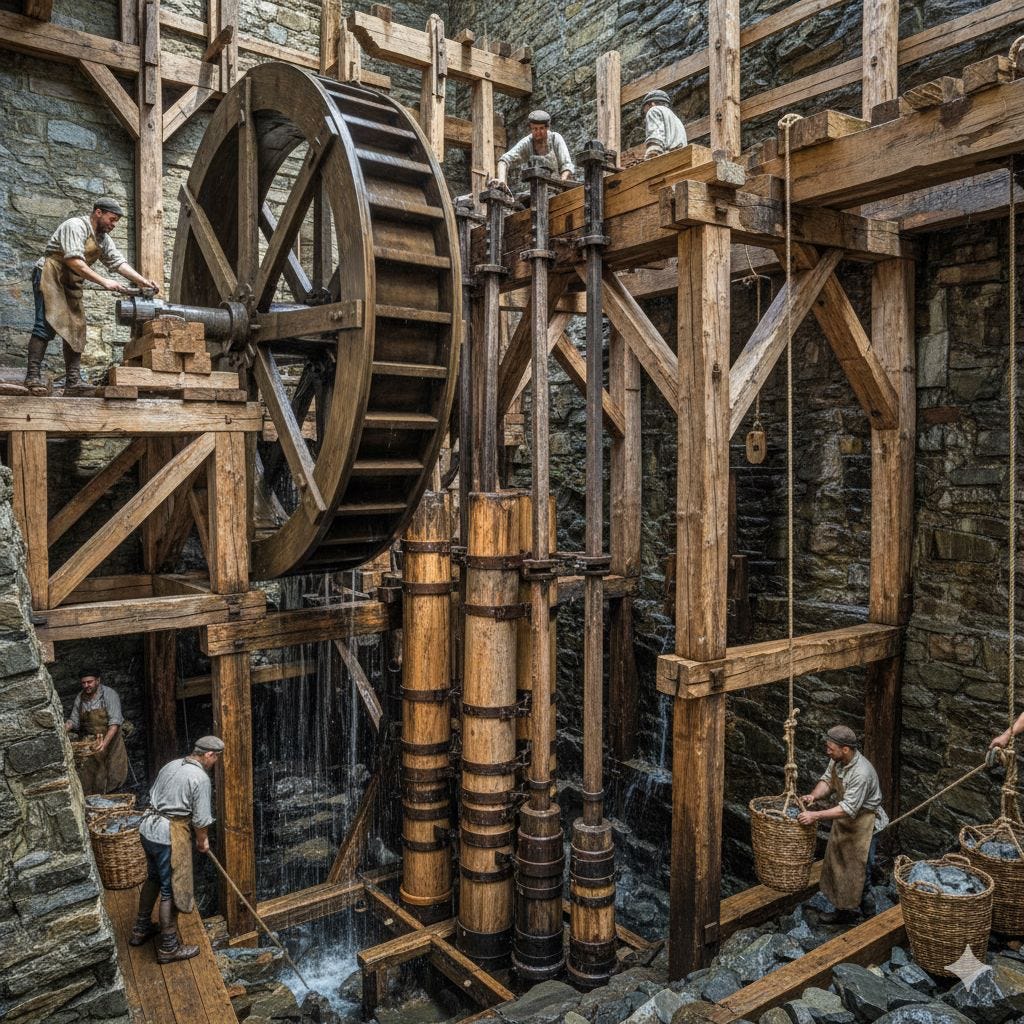
Romans knew about waterwheels and pumps, but they never used them for extracting water out of mines. Central Europeans put them together into ever more complex systems to dry up mines and extract more ore.

Streams were not available everywhere, though. How could Central Europeans lift water where there was no stream to power their wheels? With horses:
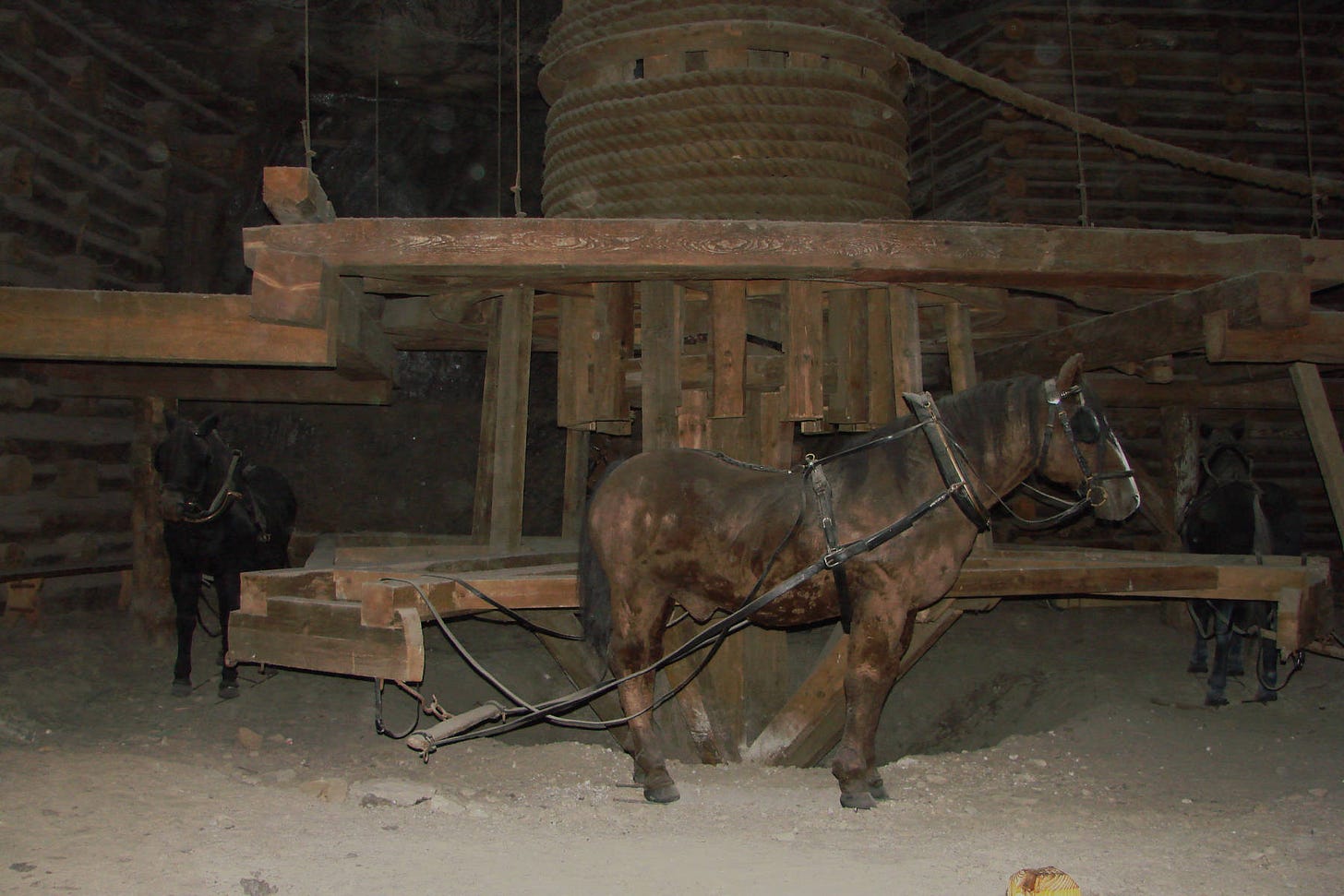
The horse gin could pull humans, ore, and water out of the hole, but how did miners get the ore out of the mine? In the 1500s, they were already using carts and tracks.
Minecart from the 16th century, found in Transylvania. Source. Versions of this with iron fittings were already described in De Re Metallica in the 1500s.
Many related technologies, invented earlier, were rediscovered during the Great Bullion Famine and became popular, spreading across Central Europe first and later all of Europe.
Another example is the camshaft, which allows rotation into vertical motion.
It enabled the spread of the stamp mill:
Which enabled crushing ore much more efficiently. Blast furnaces allowed the extraction of more bullion from the ore (bullion is the processed metal, as pure as you can get it, but not yet shaped into money. Ingots are a good example). All these are precursors of the industrial revolution that saw massive development as a result of the Great Bullion Famine, which makes you wonder: If there had been no Black Death, the Bullion Famine would have hit earlier. Would modern world development have happened earlier?
But there were two significant innovations that allowed Europe to increase its silver production by 5x between the 1460s and the 1540s.
Both innovations were new processes to extract more silver from ore. The first one is called liquation, and was first discovered in southern Germany in the mid-1400s, just as the Great Bullion Famine was hitting hardest. Of course, that’s not a coincidence: It was the bullion famine that was spurring mining innovation. Within 15 years, it had spread throughout Germany, Poland and the Italian Alps.
For thousands of years, people knew how to use lead to extract silver, in a process called cupellation. But there was no more lead-silver ore left to mine economically. There was, however, a lot of copper with silver. Metallurgists just didn’t know how to separate them. This is where liquation came in: Metallurgists learned how to liquefy the metal to a high enough temperature (thanks to blast furnaces) so that copper would rise to the top and silver would concentrate at the bottom. They would take out that bottom with lots of silver (still mixed with some copper), and then they’d add a lot of lead to that and melt it again. Silver prefers lead to copper, so it would attach to the lead. Once they obtained the silver-lead mix, smiths used the existing cupellation process to extract the silver from the lead.
Slowly, Europe’s supply of silver increased, but it wasn’t enough. Europeans were desperate to get more silver. This was one of the key drivers behind the expeditions to America.
We’ve already explored how Portugal’s discovery of an alternative path to Asia was made to bypass the Ottomans, who had taken control of Istanbul and blocked Christian trade through the Silk Road. But that trade still required gold and silver, and Europe didn’t have any. So the Portuguese were also looking for gold and silver deposits to mine. They found some in Western Africa—remember the Mali Empire—but that was not enough.
Now you know why Spanish Conquistadors were so obsessed about finding gold and silver in the Americas. It was not just a matter of greed. It was an existential matter for Europeans after the Great Bullion Famine. This is why Columbus mentioned gold 65 times in his diaries!

Spaniards didn’t find much gold in the Americas, but they did find silver. Unfortunately, the high-quality silver ore quickly ran out, and Spaniards were left with ore that didn’t contain enough silver to be extracted.
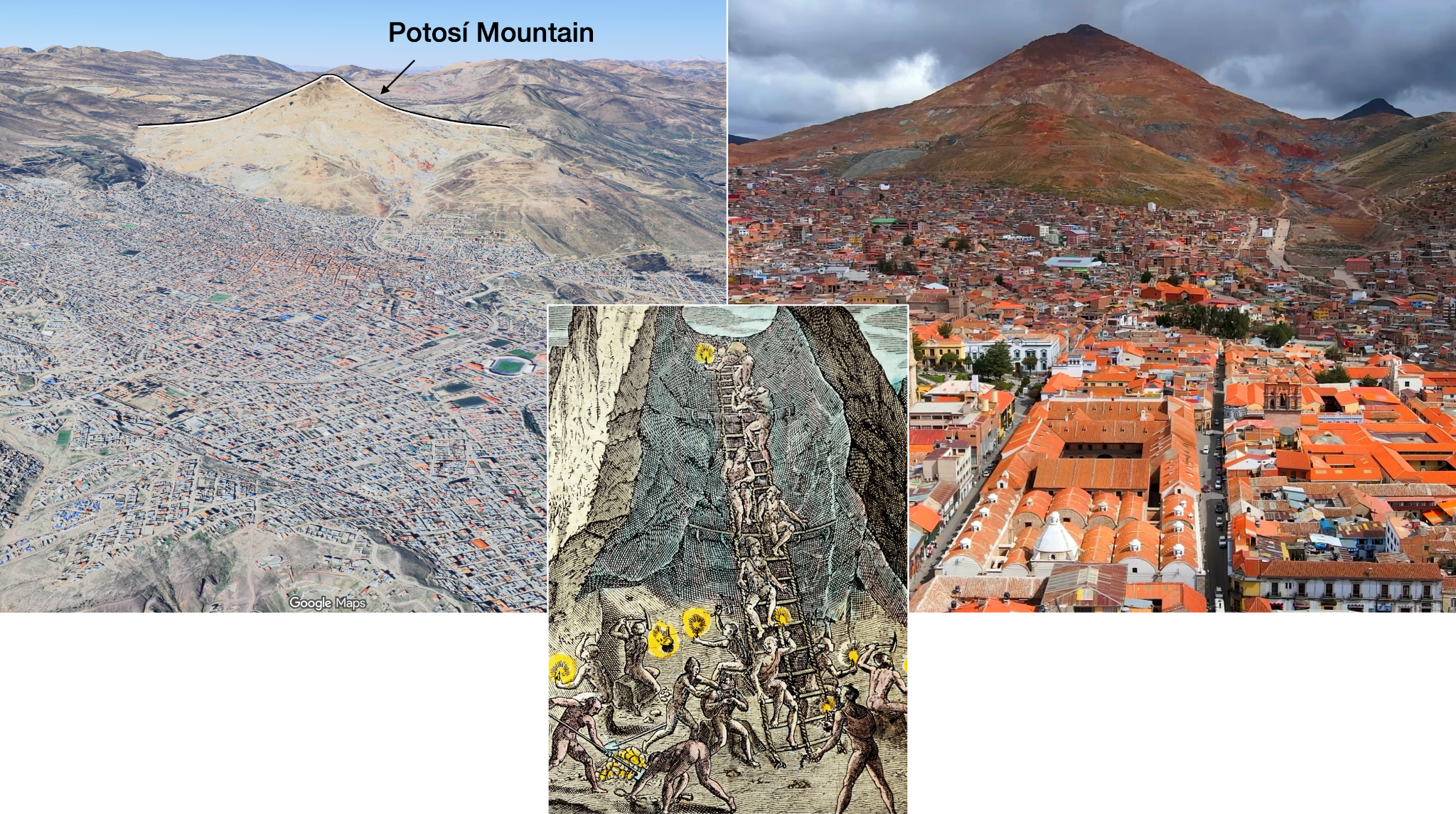
That’s when they invented a new technique to get more silver from the lower quality ore: amalgamation, via the patio process.
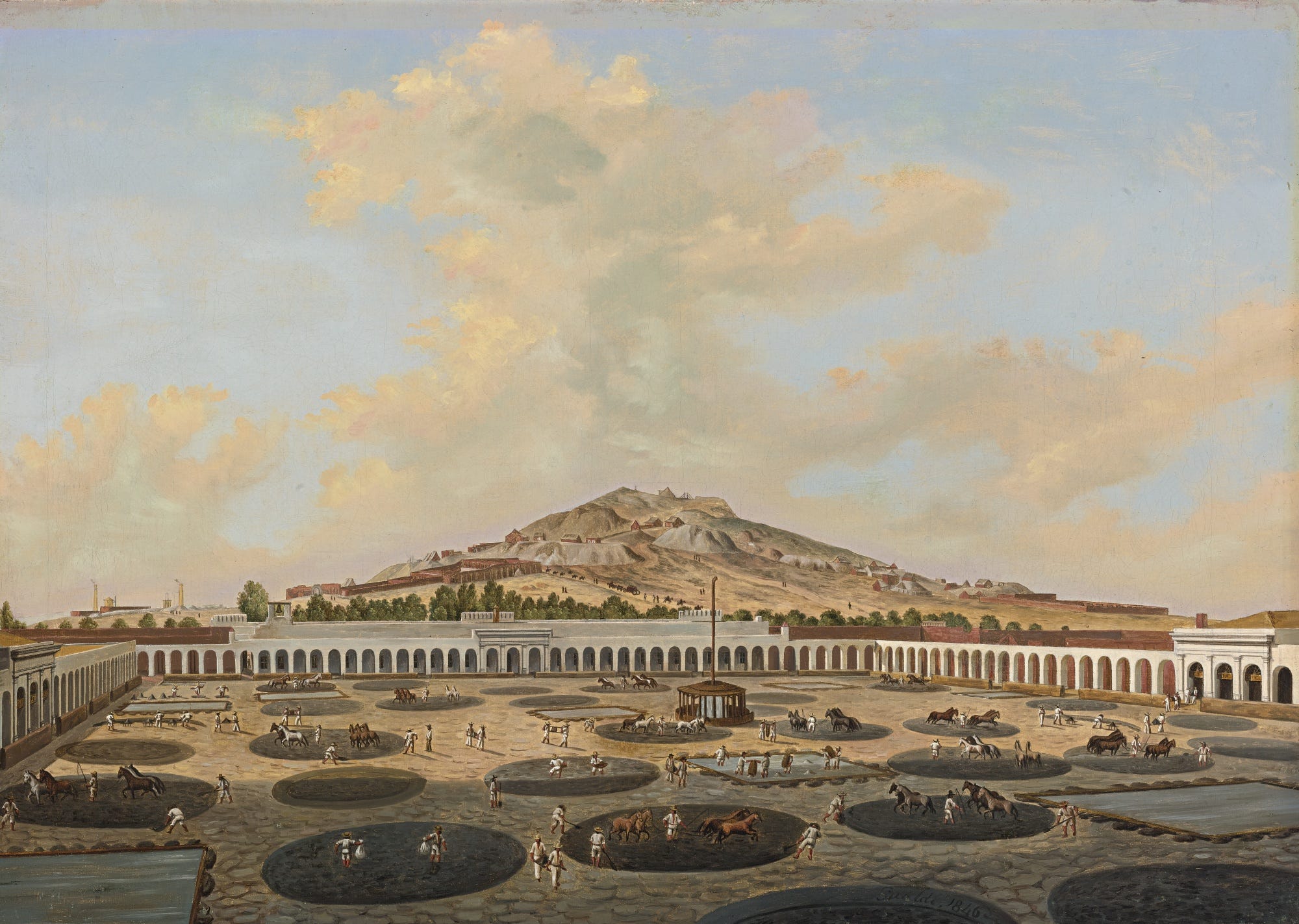
The concept is quite similar to liquation, except you don’t need to melt the metals, and you use mercury instead of copper and lead. Mercury binds to silver and gold, but not base metals like iron, copper, or lead. So the Spaniards took the finely crushed ore, added salt to bind to the silver, then added mercury to bind to the silver salts, and finally used cupellation to separate mercury and silver (or gold). It’s called patio (“courtyard” in Spanish) because all that stuff was just mixed in shallow pools, treaded on to mix well, and left for the sun and wind to bake. This was the result:
The Consequences of the Silver Flood
We already covered the consequences of this massive supply on China, but in Europe the consequences were even more intense:
The rise of the Spanish Empire
Its destruction
The rise of some specific families that changed geopolitics forever
The winning countries were not the obvious ones
This undermined feudalism
The nature of wars changed, and that ushered in nation-states
The Industrial Revolution was made possible
We’ll cover these in the next article!


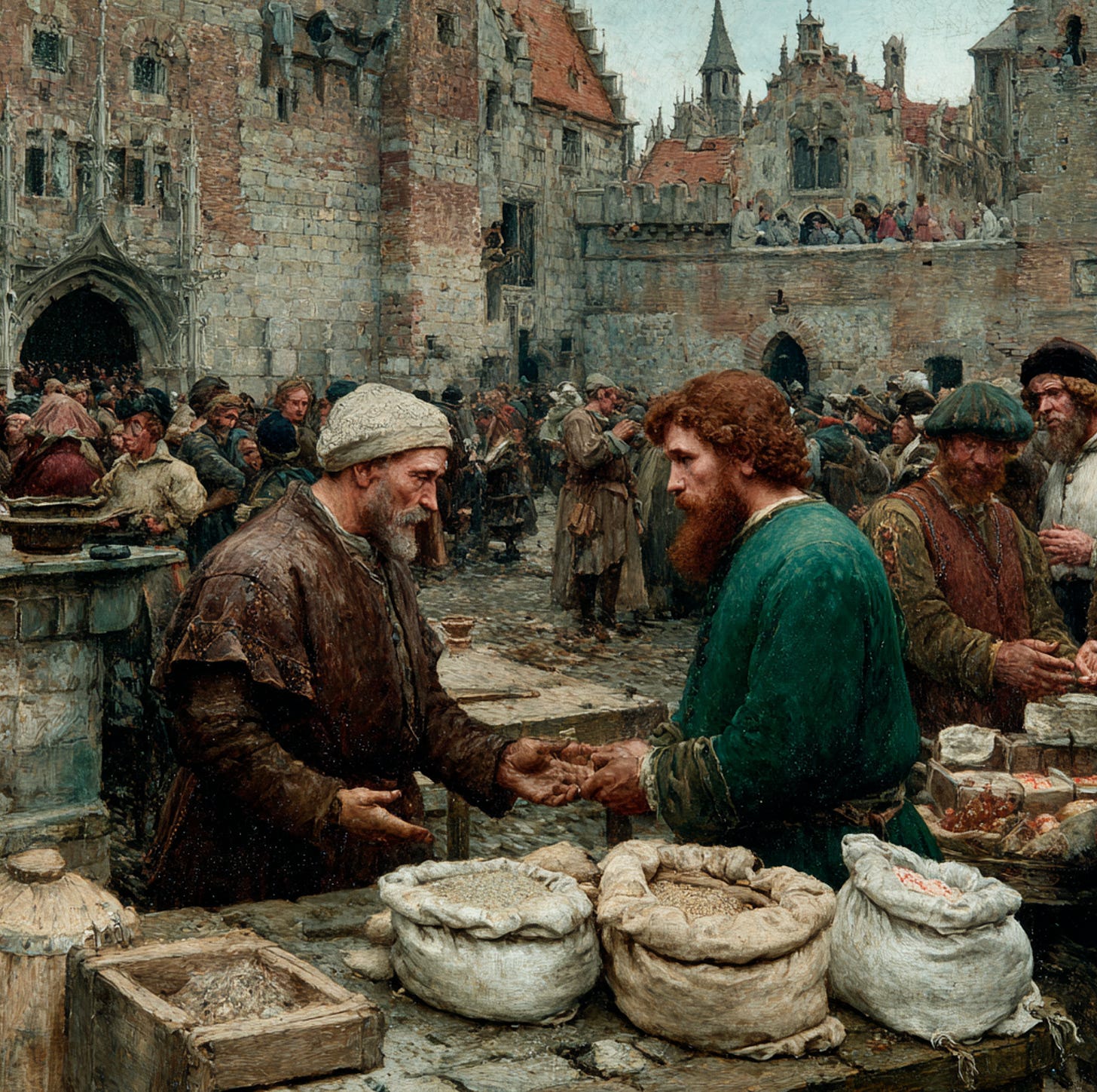

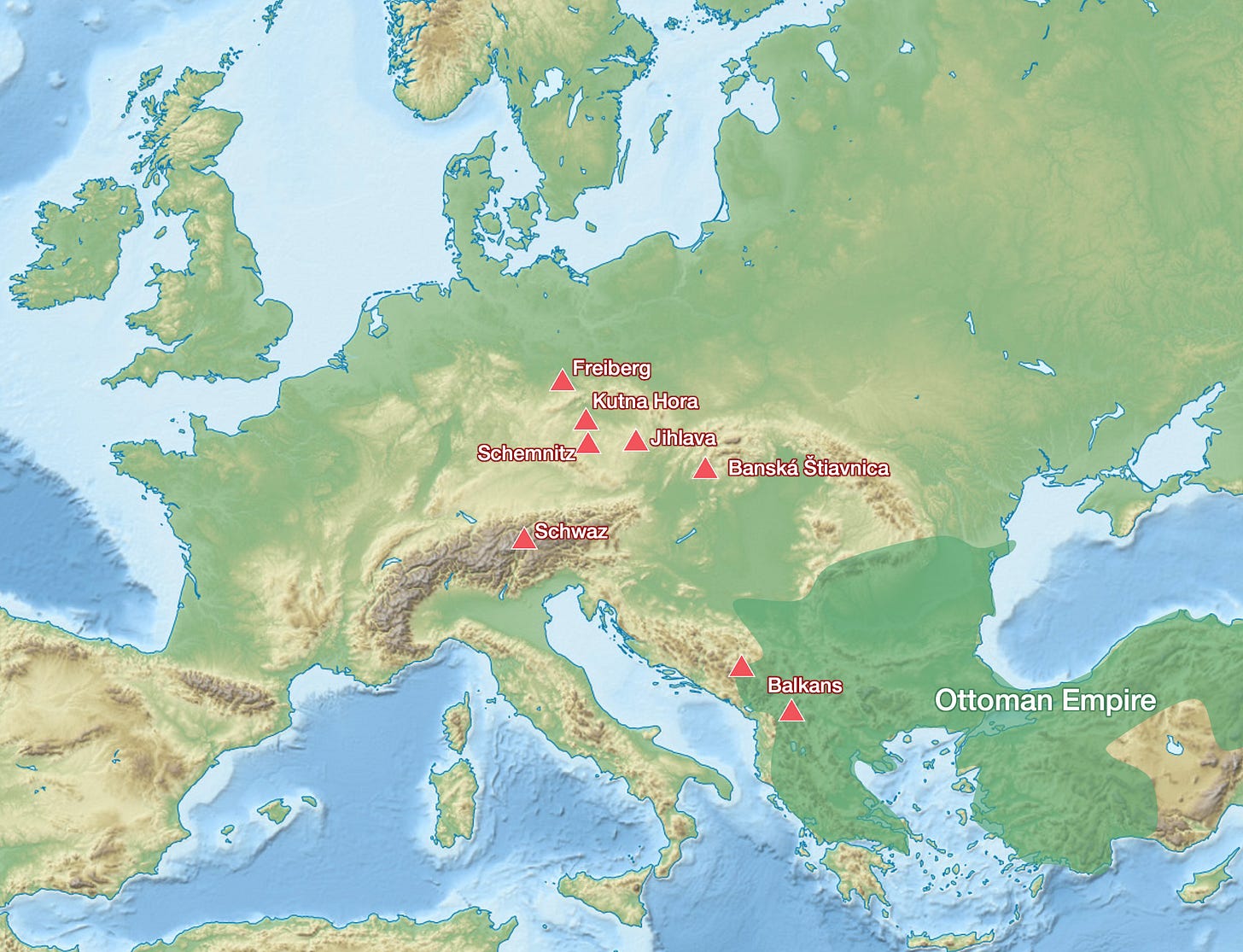
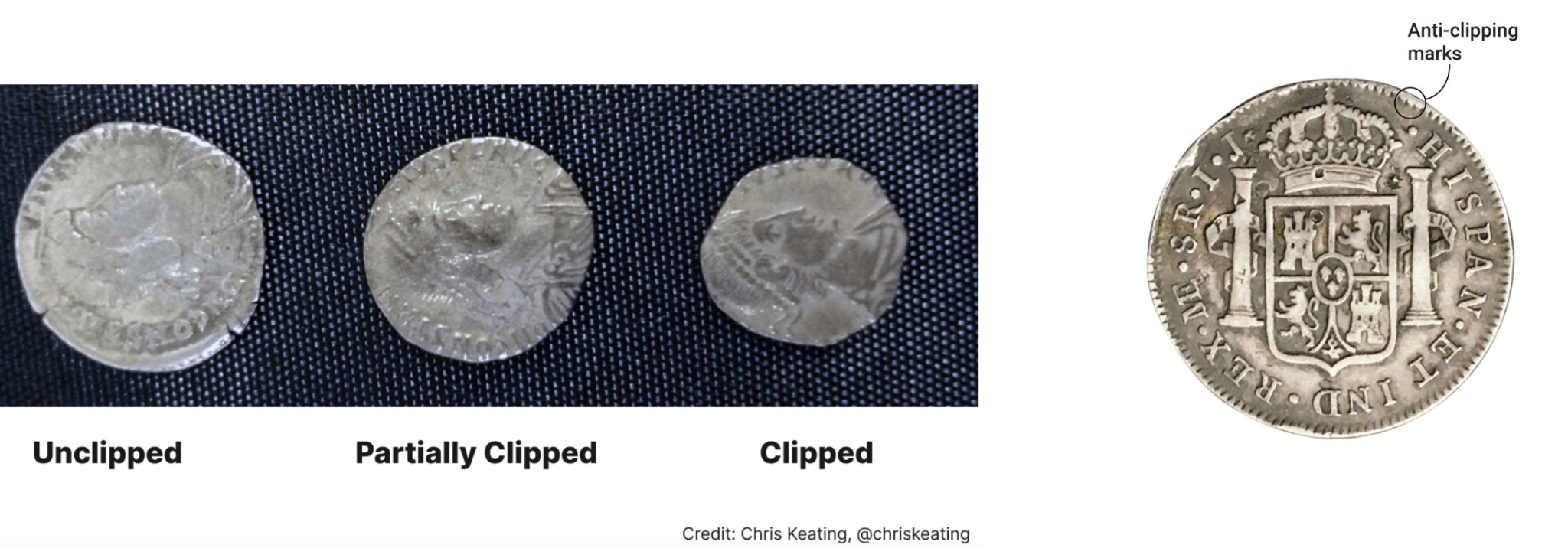


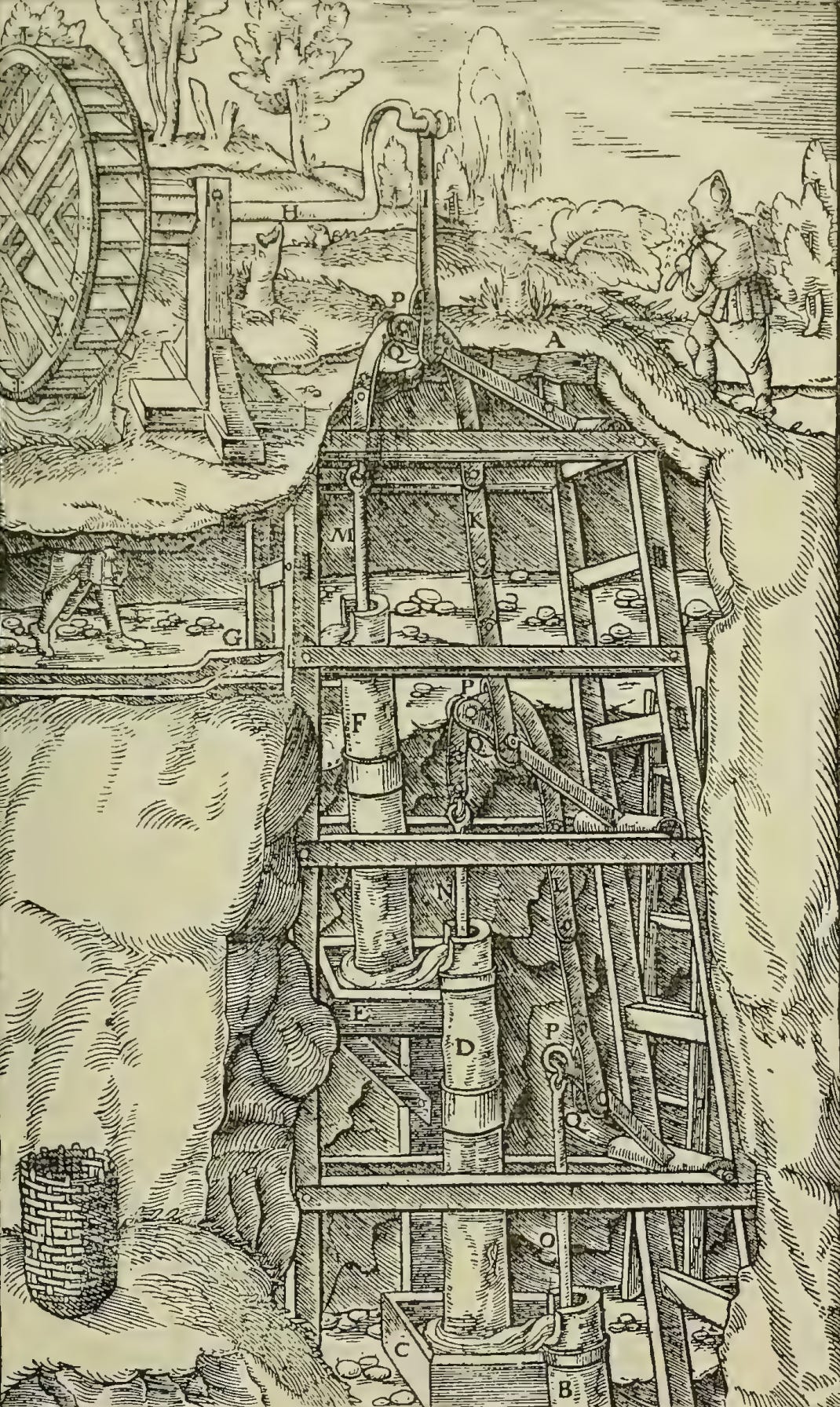


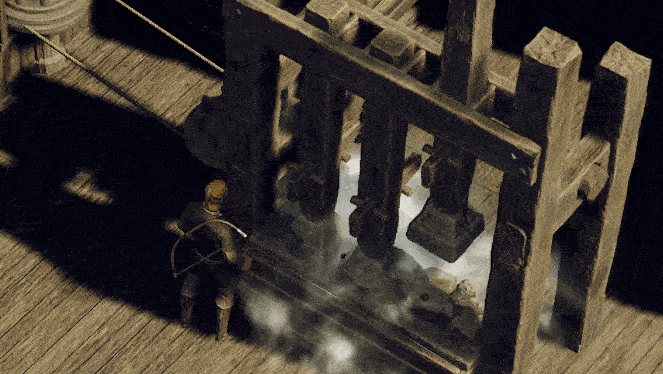
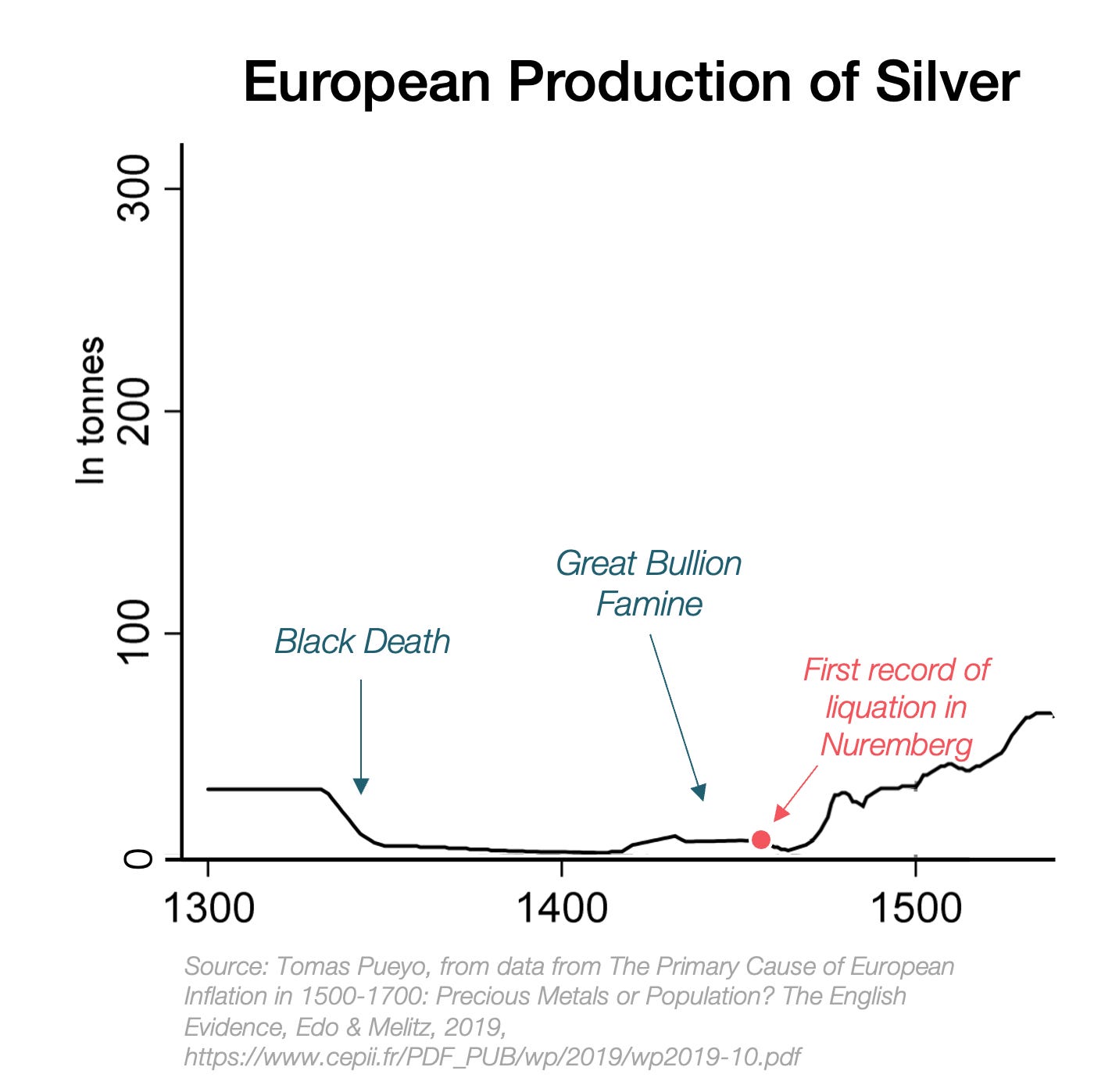

What a master class you could teach in geopolitical history! Great job, Tomas.
Fascinating, excellent info!